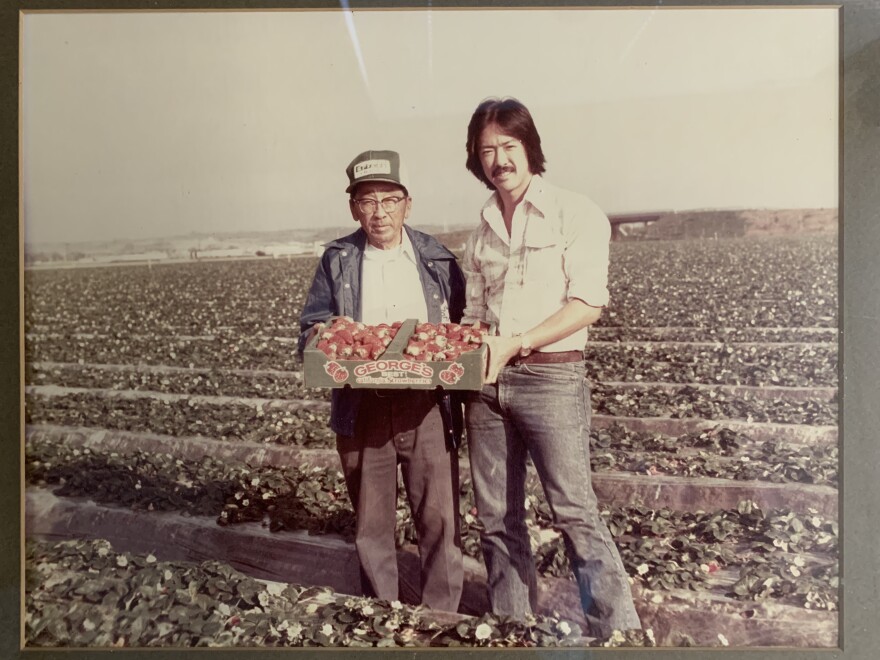Truth matters. Community matters. Your support makes both possible. LAist is one of the few places where news remains independent and free from political and corporate influence. Stand up for truth and for LAist. Make your year-end tax-deductible gift now.
The long legacy of Japanese immigrants and the strawberry fields of Southern California

Strawberry fields used to be a common sight in Southern California, growing among the region’s suburban sprawl with splashes of greenery and fragrant smells.
In fact, nearly all strawberries sold in the U.S. today trace their roots back to California — and one particular group of immigrants.
Here's what we know about the intersection between Japanese American history and those delicious red berries.
How Japanese immigrants took to strawberries
At the turn of the 20th century, a large group of Japanese immigrants arrived in the U.S., many with farming experience.
“The vast majority of Japanese people were raised on small-scale farms,” said Emily Anderson, a project curator at the Japanese American National Museum. “So working in agriculture was the perfect fit for them.”
By 1924 the Immigration Act, sometimes called the Japanese Exclusion Act, limited immigration, completely excluded immigrants from Asia during a time of anti-Asian sentiments. State laws also prevented Japanese immigrants already here from owning land and barred them from becoming naturalized citizens.
Some Japan immigrants turned to work as tenant farmers on small patches of land and found strawberries to be a high-yield crop. Japanese immigrant farmers quickly became the backbone of the berry business.
“Prior to World War II [Japanese immigrants] were growing about 90% of strawberries in the state," Glenn Tanaka, whose family owns and operates Tanaka Farms in Irvine, said.
Farmers incarcerated
After the bombing of Pearl Harbor and the United States’ entry into World War II in 1941, President Franklin D. Roosevelt signed Executive Order 9066 which forcibly removed and incarcerated people of Japanese descent.
Most of them had to walk away from fields that were just about ready to harvest
More than 120,000 Japanese Americans were detained in incarceration camps. The order devastated many businesses, including farmers.
“Most of them had to walk away from fields that were just about ready to harvest,” said Anderson.
During the war, California’s strawberry crop dwindled to about a quarter of what it had been. Tanaka said his grandfather and father were able flee and avoid incarceration but had to leave their family farm.
After the war, they began growing strawberries again.
Many other Japanese farmers did the same after the war. By 1950, California harvested over 81 million pounds of strawberries or four times the prewar high, according to the L.A. Times.
The agrotourism shift
The Tanakas turned from selling wholesale tomatoes and strawberries to providing agritourism services. Instead of selling their produce to companies, Tanaka Farms allows visitors to come and pick their own strawberries and pumpkins while also offering different activities.
“We invited some schools out to come pick strawberries, and it was just a really, really big hit,” Tanaka said. “Having the public come out and pick the strawberries saves us a lot in labor and enabled us to survive and still be farming.”








